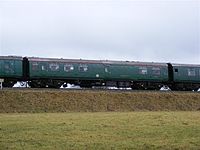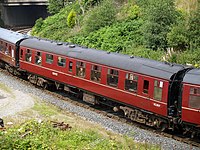The London, Midland and Scottish Railway (LMS) inherited several styles of coaching stock from its constituents. Stock built by the LMS itself can be categorised into three separate periods, numbered I to III.

The Southern Railway (SR) gave the designations 4-COR, 4-RES, 4-BUF and 4-GRI to the different types of electric multiple unit built to work the route between London Waterloo and Portsmouth Harbour. The 4-COR type units survived long enough in British Rail ownership to be allocated TOPS Class 404. The COR designation had previously been used for the 6-PUL units and was reused by them during World War II when the Pullman car was stored, but this stock was different from the 4-COR units.

The British Rail TC multiple units were unpowered fixed formations of 3 or 4 carriages with a driving position at each end of the set, converted by BR's Holgate Road carriage works from locomotive-hauled Mark 1 carriages in 1966–1967 and 1974. The units built on experience gained from the prototype 6TC unit. In time the 3 car units were reformed into four car units to match the rest of the fleet and later classified as Class 442. This was later changed to Class 491, under which they spent the majority of their working lives. Shortly before withdrawal they were reclassified Class 438 and the units were renumbered to 8001-8034.

The British Rail Mark 3 is a type of passenger carriage developed in response to growing competition from airlines and the car in the 1970s. A variant of the Mark 3 became the rolling stock for the High Speed Train (HST).

Tourist Second Open or Tourist Standard Open, abbreviated to TSO, is a type of British Railways coach. The designation "Tourist" was originally as opposed to a normal SO coach. Both types have the same number of seating bays per coach, but the TSO has four seats across, arranged 2+2 either side of a central aisle, while an SO has 3 seats across, arranged 2+1 with an offset aisle. Both offer the same legroom, but there is slightly less width per passenger in a TSO.
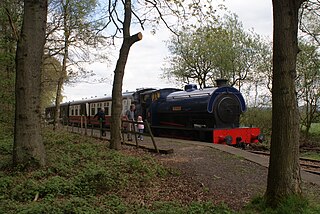
The Foxfield Railway is a preserved standard gauge line located south east of Stoke-on-Trent. The line was built in 1893 to serve the colliery at Dilhorne on the Cheadle Coalfield. It joined the North Staffordshire Railway line near Blythe Bridge. It is open at weekends and operates trains on Sundays, Bank Holidays and some Saturdays from April to October and Santa Special trains in December. It is home to the Knotty Coach Trust, The Foxfield Miniature Railway, a museum, café, bar, shop and hosts visits from the adjacent Olcote Animal Sanctuary the first three Sundays in a month.

A Brake Standard Open (Micro-Buffet), often abbreviated to BSOT or BSO(T), is a type of railway carriage used by British Rail.

Seymour railway station is located on the North East line in Victoria, Australia. It serves the town of Seymour, and opened on 20 November 1872. The station is the terminus for V/Line's Seymour line services.
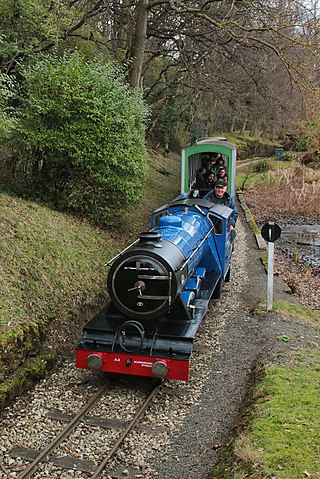
Scarborough North Bay Railway (SNBR) is a ridable miniature railway in Scarborough, North Yorkshire, England. It was built in 1931, to the gauge of 20 in, and runs for approximately 7⁄8 mile (1.4 km) between Peasholm Park and Scalby Mills in the North Bay area of the town. The railway attracted approximately 200,000 visitors in the 2014–2015 season, and remains popular with tourists.

A First Open or FO, is a type of railway carriage used by British Rail and subsequent operators since privatisation. They were first produced as British Railways Mark 1, and subsequently Mark 2, Mark 3, and Mark 4 variants were produced. This type of carriage is an "open coach" because of the arrangement of the seats inside – other types of carriage may be corridor based variants (FK) or have a brake compartment.

The S type carriages are a corridor-type passenger carriage used on the railways of Victoria, Australia. The first carriages were constructed by the Victorian Railways in 1937 for use on the Spirit of Progress, with additional carriages built for other trains until the mid-1950s.

The NZR 56-foot carriage is a class of 56 ft (17 m) long railway passenger carriage formerly used on almost all long-distance passenger rail transport in New Zealand. 88 carriages have been preserved.

A Restaurant Standard Buffet (RSB) is a type of rail passenger car that operates on railway lines within the United Kingdom.
The Great Central Railway (Nottingham) (formerly known as the Nottingham Heritage Railway) is a heritage railway located at the Nottingham Transport Heritage Centre (NTHC), on the south side of the village of Ruddington, in Nottinghamshire. The route consists of almost 10 miles (16 km) of the former Great Central Main Line from Loughborough South Junction (with the Midland Main Line) to Fifty Steps Bridge and the site of Ruddington's former GCR station, plus a branch line from Fifty Steps Bridge to Ruddington Fields station which is located on a former Ministry of Defence site next to Rushcliffe Country Park.

The RUB type carriage stock was a type of steel bodied air conditioned passenger carriage operated by the New South Wales Government Railways from September 1949 until April 2000.

The streamlined East Anglian service of the London and North Eastern Railway was introduced on 27 September 1937, soon after the Coronation and the West Riding Limited, but differed from those – and from the Silver Jubilee of 1935 – in several respects. It did not use new Class A4 4-6-2 locomotives but instead existing Class B17 4-6-0s were given a streamlined casing; although new carriages were built, these were neither articulated nor streamlined; there was no special livery; it ran at speeds not much greater than those achieved by existing expresses on the Norwich line; and there was no supplementary fare.
The R type carriages were a series of locomotive-hauled carriages proposed to be built for the Victorian country rail network in the early and mid 1980s.
This page outlines the history and evolution of Victorian Railways (Australia) bogie passenger carriages, constructed with steel underframes and timber bodies up to 59 ft 9 in (18.21 m) long, as well as a few other carriages from the era.
This article describes the nine airconditioned sitting cars and fourteen brake vans that were built by the South Australian Railways at Islington Workshops between 1964 and 1967. All were distinguished by fluted stainless steel panels on their sides, compatible with the appearance of cars introduced to The Overland in 1950.
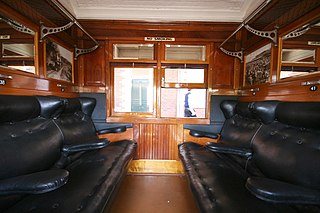
The E type carriages were wooden express passenger carriage used on the railways of Victoria, Australia. Originally introduced by Victorian Railways Chairman of Commissioners Thomas James Tait for the interstate service between Melbourne, Sydney and Adelaide, these Canadian-inspired carriages remained in regular service for 85 years over the entire Victorian network.








